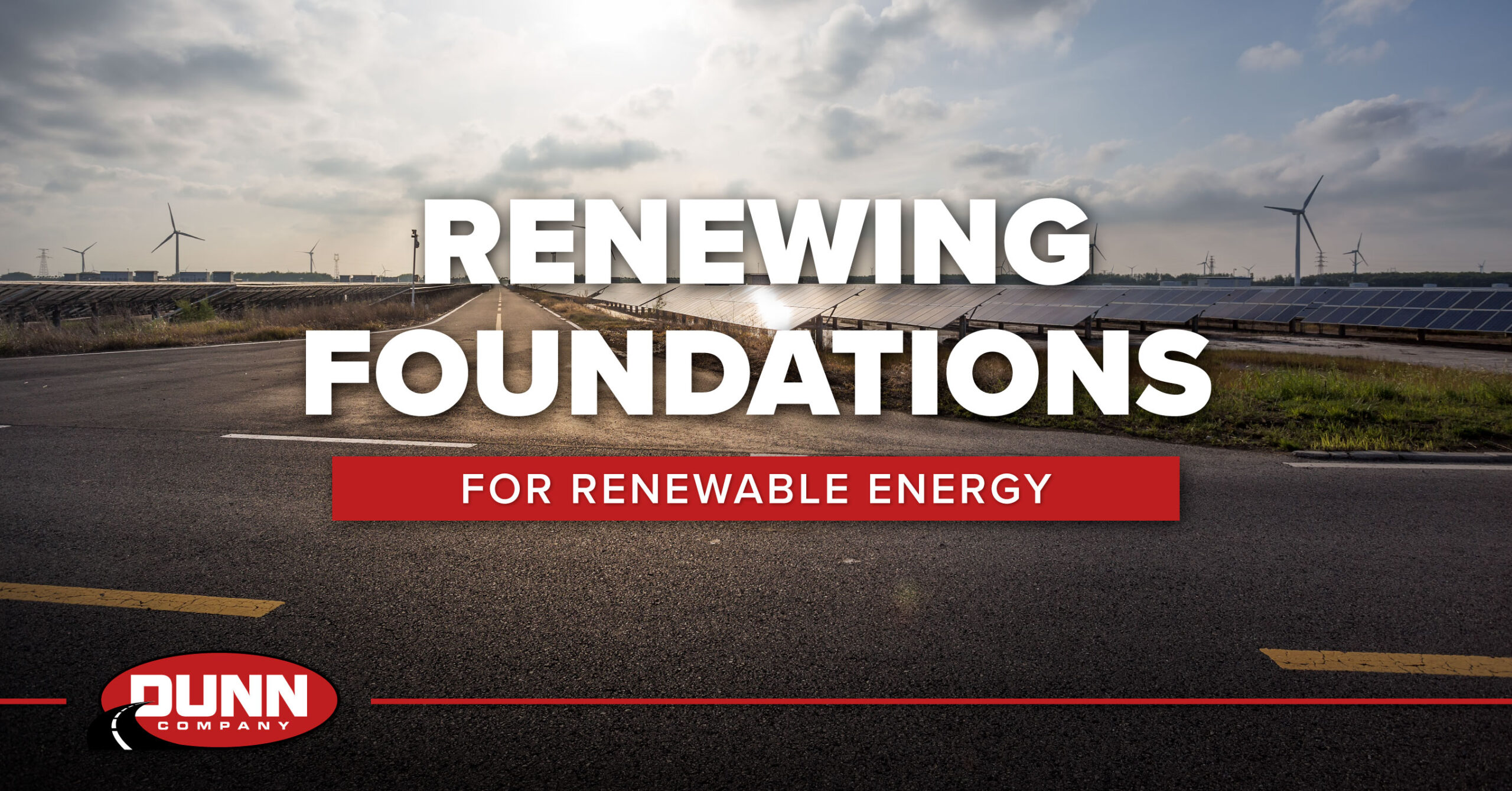Renewing Foundations for Renewable Energy
As the push for renewable energy continues to grow, wind and solar farm projects face a unique set of challenges. These large-scale infrastructure projects require careful planning and execution to ensure they are built on solid, sustainable foundations that can withstand the heavy equipment involved, environmental factors, and the demands of the energy sector.
One of the key elements in the successful construction of renewable energy projects is ensuring the proper stabilization of soils, building robust access roads, and improving local infrastructure to handle the weight and movement of heavy machinery. For engineers and construction professionals, making the right choices early on can ensure efficiency, cost-effectiveness, and longevity, ultimately reducing the project’s carbon footprint.
Soil Stabilization for Renewable Energy Projects
The first critical step in preparing for any renewable energy project is soil stabilization. Without a solid base, any road infrastructure will quickly degrade, especially under the weight of the heavy cranes, turbine components, and other equipment that must be transported on-site. Soil stabilization serves as the foundation for a durable and long-lasting road system.
Stabilizing the soil to withstand the harsh conditions of these projects often involves soil-cement stabilization, which is an environmentally friendly and cost-effective solution. Cement stabilization is particularly beneficial for roads that will be exposed to dynamic loads and frequent heavy equipment transport, such as those in wind and solar farm construction.
For engineers, it is essential to conduct geotechnical studies to assess the soil type and determine the most effective cement ratio for stabilization. This ensures the mixture is tailored to the varying terrain conditions, maximizing the strength and durability of the soil. The design process should also take into account drainage, as water retention can weaken stabilized layers and lead to costly repairs down the line. By incorporating additives like fly ash or lime, roads can gain enhanced resistance to moisture-related damage, providing long-term durability.
Once the soil is stabilized, field testing is often performed to validate the strength of the stabilized road base. Common tests, such as California Bearing Ratio (CBR) and Unconfined Compressive Strength (UCS), help to determine whether the stabilized soil will meet the performance standards required for the project.
Building Access Roads for Heavy Equipment
In addition to the soil stabilization, creating access roads for large machinery is another crucial step in the construction process. These roads are necessary for the transportation of turbine components, cranes, and solar panels, all of which are too heavy and large to be transported on standard roads. Access roads must be designed to handle these heavy loads without deteriorating under the stress.
The road construction process involves more than just pouring asphalt, it requires proper thickness and reinforcement to ensure that these access roads can handle the load-bearing requirements. Engineers need to consider structural design that takes into account the specific needs of transporting large equipment and providing access to remote areas.
In addition, the use of cement stabilization for these access roads ensures that they remain strong and durable, even in harsh weather conditions. This approach prevents common issues such as erosion, cracks, and ruts, which can significantly increase maintenance costs and disrupt operations.
Improving Infrastructure for Long-Term Sustainability
When working on renewable energy projects, there is often a need to improve existing local infrastructure. Public roads and local access roads must be reinforced to allow for the movement of heavy equipment while also supporting long-term use and maintenance. Roadways must be designed with proper drainage systems to prevent water buildup, which could weaken the integrity of the roadbed. The goal is to ensure that these roads can withstand the harsh environmental conditions while providing reliable access to the project site.
Improving these roads, especially in rural areas where many renewable energy projects are located, helps local municipalities maintain infrastructure that benefits not only the energy project but also the surrounding community. Dunn Company works closely with local authorities and engineers to ensure that the necessary road improvements are made in accordance with project timelines while adhering to all safety and environmental regulations.
Reducing Environmental Impact with Full Depth Reclamation and Cold In-Place Recycling
Sustainability is at the heart of renewable energy projects, and this goal should extend to the construction process as well. One effective way to reduce the environmental impact is by incorporating techniques like Full Depth Reclamation (FDR) and Cold In-Place Recycling (CIR). These methods minimize the use of new materials by reusing existing asphalt and base materials, reducing both the cost and the carbon footprint of the project.
Integrated Carbon Emissions from Asphalt Pavement Regeneration (www.mdpi.com)
FDR is particularly useful for projects that require extensive road rehabilitation, as it pulverizes the existing pavement and mixes it with stabilizing agents to create a new, stronger road base. CIR similarly helps by milling existing asphalt and reusing it, reducing the need for new aggregates and reducing the carbon footprint associated with material transportation.
Both of these techniques contribute to lowering transportation costs and reducing construction waste, aligning perfectly with the sustainability goals of renewable energy projects. By using these innovative methods, renewable energy projects can significantly reduce their environmental impact while still meeting the durability and performance needs of the project.
A Comprehensive Approach for Renewable Energy Projects
Renewable energy projects require a comprehensive and cohesive approach to site preparation, from soil stabilization to access roads and local infrastructure improvements. By addressing the unique challenges of heavy equipment transport, road durability, and environmental concerns, engineers and contractors can help ensure the long-term success of the project.
Working with Dunn Company provides an opportunity to utilize industry-leading techniques and innovative approaches to reduce costs, minimize environmental impact, and ensure that the necessary infrastructure is in place for long-term sustainability.
Our expertise in soil stabilization, access road creation, and full-service infrastructure improvements makes us a trusted partner for your renewable energy projects. With the right planning and execution, your renewable energy projects can achieve their full potential, benefiting the environment, your business, and the communities they serve.
Contact a Dunn Company representative today to learn more about how we can help with your next project.


